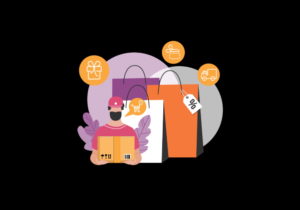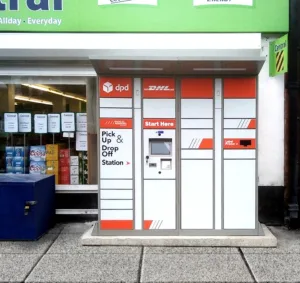By Nick Parmar, Vice President, Cloud Communications, Tata Communications
In the last decade, the experience between consumers and retailers has shifted. While brick-and-mortar stores were the original point of contact, online shopping has transformed this experience, especially since the pandemic curtailed in-person shopping. Since then, it appears that more customers believe retailers would prefer the same cross-channel flexibility they offered during the pandemic, with 55% saying they are more loyal to retailers with physical stores and online options.
The question remains how can retailers continuously interact and support their customers across platforms? While creating these channels is easier, managing them simultaneously is significantly more challenging.
In this article, I will examine the omnichannel challenges that retailers must resolve to accelerate more profitable customer engagement. I will highlight how technology can deliver better experiences and illustrate why using managed services providers can ensure retailers are always finding innovative ways to best support their customers and developing long-term relationships with them.
Omnichannel challenges retailers face
With the widespread proliferation of data, a crucial challenge for retail companies is ensuring enough value can be efficiently derived from data to meet customers’ growing expectations. The four primary challenges to this are:
- Data is in silos: Presently, most traditional businesses have distinct systems for capturing leads, loading orders and processing invoices – all from disparate methods that aren’t connected. Similarly, when a customer buys a product, reviews it, services it, or places a future order for a new product, all that information is stored in different places. These data silos make it difficult for brands to pull the information together to deliver a unified customer experience.
- Inefficient use of data: Retailers aren’t capitalising on the abundant data they possess to deliver personalised experiences. For example, by failing to capitalise on that key information and feed it back into tools such as chatbots, they fail to meet consumers’ expectations, which can lead to hindrance.
- Following the 80/20 rule: In this context, it means providing the best automated service for the top three issues customers contact you for and falling back to traditional methods for everything else. It’s when automated service isn’t consistent, nor meet customers’ expectations, that they become an issue.
- Reducing the carbon footprint: Customers are incredibly mindful of social and environmental issues, preferring responsibly sourced products. Consequently, retailers face the challenge of incorporating sustainability within retail. They must design a sustainable supply chain with an environment-friendly distribution strategy especially in today’s growing e-commerce market.
Ensuring a great customer experience
Retailers can solve these challenges by providing customers with a personalised experience that makes them feel great.
Here are two examples:
- Apart from providing promotional offers, retailers must go above and beyond to deliver a level of personalisation like never before.
In this instance, if a customer is looking to purchase an item that’s out of stock, retailers can promote their service by contacting them when it’s back in stock and perhaps even present a one-time discount if they purchase the product immediately. This keeps the business connected and engaged with the customer – leading to a remarkable experience with the brand.
- Another example is for retailers to take note of repeat customers for a particular product and provide them with a subscription offer that saves them time from buying it manually every time. Producing this personalised service tells the customer you’re aware of their needs and makes them understand that the brand cares about them.
Using data to provide great customer experiences is where the best brands differentiate themselves from competitors.
Technology to help drive better customer engagement
Traditionally, researching a product began online, however the purchase often happened in-store because the customer wanted the experience of feeling the product before buying. Conversely, products purchased online are the ones customers are already familiar with.
However, the pandemic shifted this trend as customers could no longer visit physical stores. So, organisations had to rethink how to accommodate during these times. For example, we helped one of our customers devise a solution whereby their customers can not only see products online but experience them in new ways and find more details about the product from store employees just as if they were physically in the shop.
This was made possible by installing high-definition cameras in the store to enable video communication that provided an elevated customer experience. The activation increased sales associates’ productivity and prompted more constructive feedback from customers.
We also worked with the retailer to train their employees to make a customer’s buying journey as close to an in-person store interaction as possible, powered by seamless video calls.
The future of customer experience
Before the pandemic, businesses began initiating chatbots, but many have not gotten it right. While chatbots’ function was to initially generate helpful solutions and retrieve customer data for insights into their preferences and shopping needs. Yet, as technology evolves, chatbots will play a more significant role in enhancing customer experiences. Due to this, chatbots will play a primary role in customer service channels for about a quarter of organisations by 2027, as per Gartner.
With the adoption of augmented reality (AR) in retail expected to increase in the coming years, AR technology will significantly improve customer experience. AR will provide opportunities that benefit both retailers and consumers with features such as virtually trying on products. A recent example is how IKEA has created an AR-enabled app that will let customers view how a piece of furniture will look in their home through a smartphone. Another example is how Apple used AR technology to allow demonstrations of an item to customers who could not visit physical shops. This new technology will facilitate a more accessible, personal shopping experience for customers while allowing them to shop in the comfort of their homes. Most importantly, the process will evolve to be more efficient for everyone involved.
This journey of the merger between technology and retail is only just starting. These advancements hold the opportunity to support retailers while also providing positive interaction with the customer. These advancements demonstrate what we can expect to influence the customer experience in the future!












